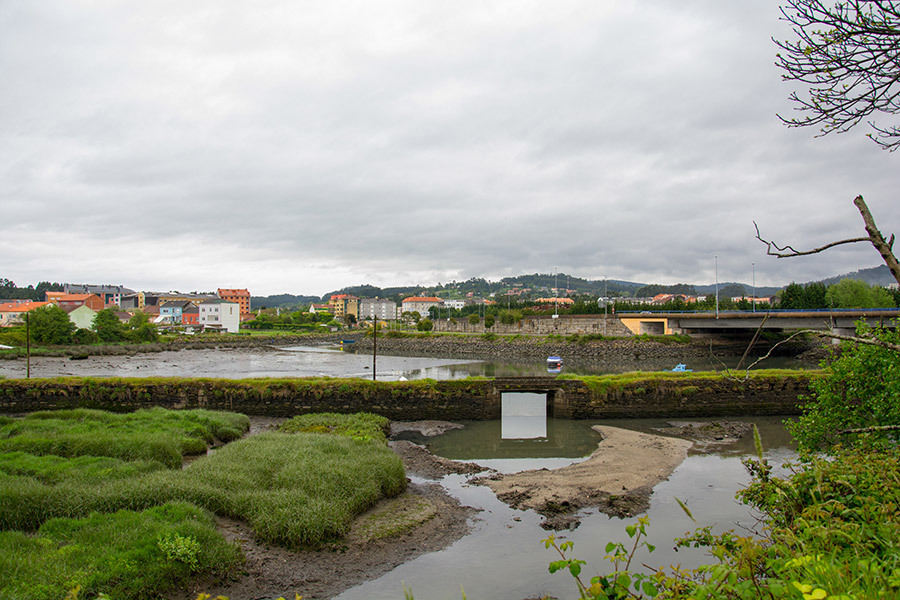A couple of meters ahead, after passing through the tunnel, you will find one of the most important flour factories operating in Galicia in the 19th century. It was built in the late 18th century (1785) by the French entrepreneur Santiago Beaujardin when the population of the city of Ferrol was growing exponentially. It reached its high point in the 19th century, coinciding with the Crimean War. At that time it received wheat via the sea from places as far and wide as America or Ukraine to be ground on their grindstones. Small boats had access to the mill to load and unload directly.
This mill is a complex work and it consists of several buildings alongside a garden surrounded by a high wall. It comprises a residential house with three floors and the mill itself. For the mil to work it had a dama where the sea water was kept at high tide and at low tide it allowed the wheels to be driven which moved the stones. The dam had a powerful retaining wall which now serves as a path; here you will find the floodgates through which the water and entered and left. This dam is regarded as the largest in this type of mills in Galicia.
It is said that in this area too there were some Roman saltworks and some fisheries. Carlos IV granted it the title of Royal Factories which allowed it, amongst other benefits, to carry out free trade with America.


